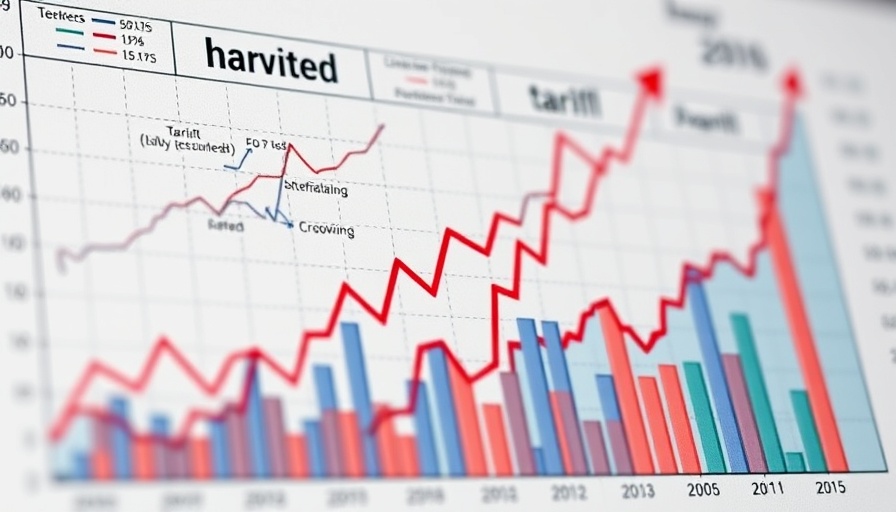
Will Tariffs Lead to Stagflation? An Investor’s Perspective
Danny Moses, the famed investor from 'The Big Short,' has recently sounded the alarm over a potential economic downturn sparked by President Trump’s latest round of sweeping tariffs. Despite the prevailing notion that the economy is on the upswing—echoed by recent GDP data showing a second-quarter recovery—Moses cautions that signs of stagflation are creeping in, a phenomenon characterized by stagnation coupled with rising inflation.
Understanding Stagflation: Why This Matters for Investors
Stagflation poses a unique challenge for economic policy as it combines the worst elements of both inflation and economic stagnation. Investors like Moses note that the unpredictable nature of the current administration's tariffs has left the markets jittery. Recent tariff hikes, including a 39% tax on Swiss exports, are framed not only as economic strategies but politically charged decisions that could have unforeseen impacts on U.S. trade relations.
What Could These Tariffs Mean for Future Trade?
The context of these tariffs varies significantly from previous economic measures. Initially aimed at alleviating trade deficits, the current tariffs appear to be more influenced by political events, like the prosecution of Brazilian President Jair Bolsonaro. As the U.S. navigates complex international relations, these tariffs may further complicate investor trust and market stability.
Future Predictions: Navigating the Stormy Economic Waters
As economic indicators fluctuate, Moses urges caution. His assertion that the market is experiencing a stagflationary phase encourages investors to look beyond surface-level data points. Historical evidence suggests that unforeseen tariffs can disrupt supply chains, push prices higher, and stifle growth—creating a recipe for stagnation. The current situation requires businesses and investors to remain vigilant and prepared for volatility.
The Role of Investors in a Stagflation Period
Investors can leverage their knowledge to navigate these uncertain waters. Understanding the implications of tariffs on global supply chains will be crucial in making informed decisions. This juncture also calls for companies to critically evaluate their operational strategies, focusing on innovation and resilience amidst market instability.
As disruptions loom, it’s essential for business professionals to revisit their investment strategies to mitigate risks associated with potential stagflation. By harnessing emerging trends and market insights, they can navigate the impending economic landscape more effectively.
 Add Row
Add Row  Add
Add 



Write A Comment